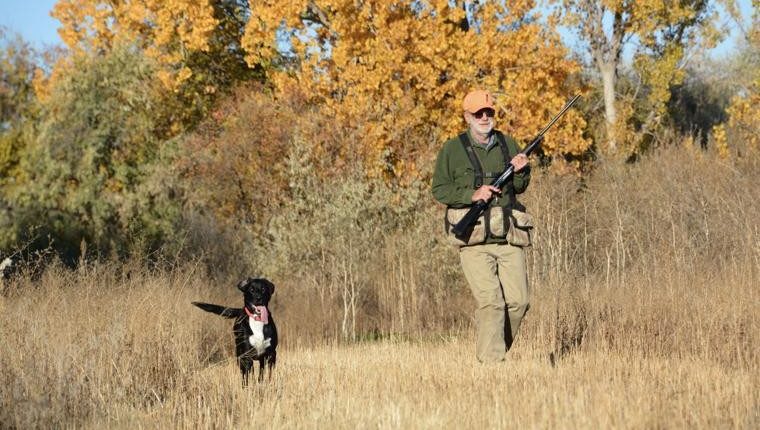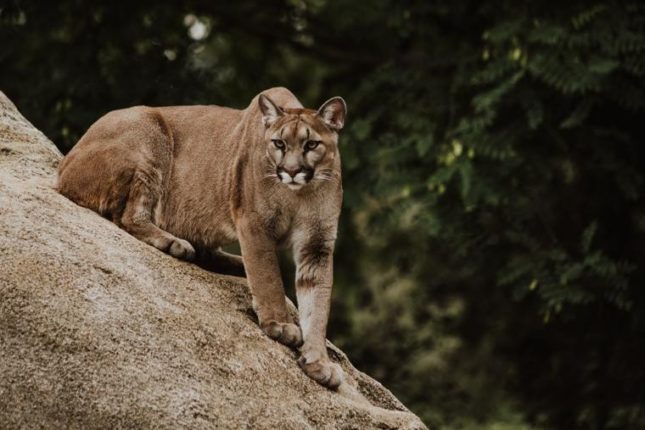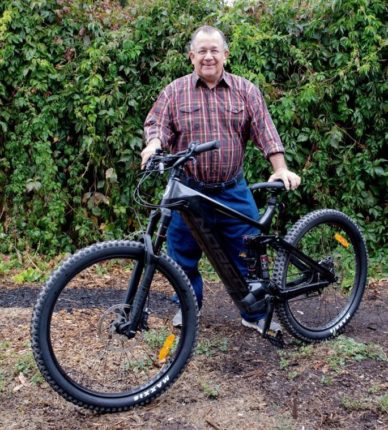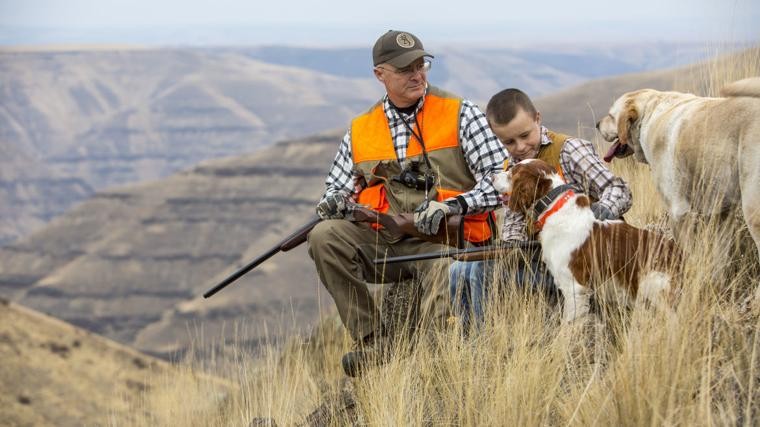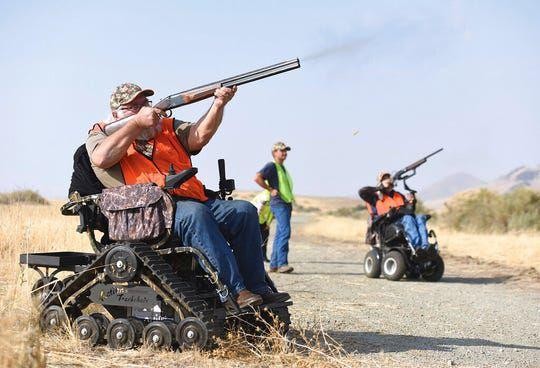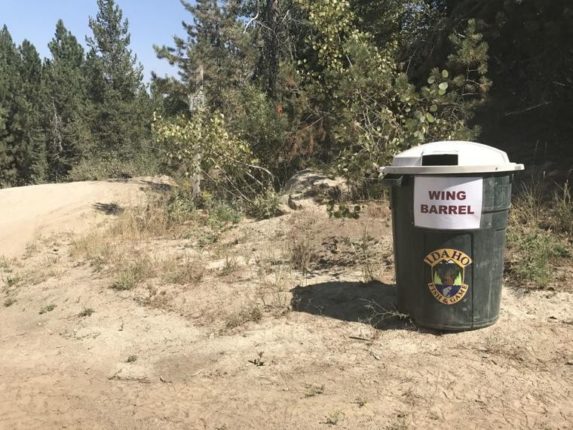Hunting season is here, and a question commonly asked is “where can I go hunting?” There’s a lot of good answers to that question in Idaho, starting with nearly two-thirds of the state is public land, and most of it is open for hunting.
Idaho Fish and Game game also provides more access for sportsmen and women. The department owns, manages and keeps open to the public about 370,000 acres at its wildlife management areas and provides literally millions more acres through its various agreements and lease programs that allow public access to various state and private lands.
Money for access comes from multiple Fish and Game funds, including Fish and Game’s access/depredation fee that requires a $5 surcharge for residents and a $10 surcharge for nonresidents when they buy their first annual license of the year.
All told, the agreements and leases provide statewide access to excellent wildlife habitat and places for people to hunt, fish, trap and enjoy other wildlife-based recreation.
“These demonstrate Fish and Game’s continued commitment to putting money from the access/depredation fee to good use and provide hunters, anglers and trappers with access to private and endowment lands while compensating landowners for their support of those activities,” said Sal Palazzolo, Fish and Game’s Private Lands/ Farm Bill Program Coordinator.
Here are some of Fish and Game’s programs that support public access.
Wildlife Management Areas
Fish and Game has 31 Wildlife Management Areas totaling about 370,000 acres and located in six of its seven regions. WMAs range from 275 to 85,000 acres and address specific priorities based upon the needs of wildlife in the surrounding area.
Fish and Game’s WMAs provide lots opportunities for hunting, fishing, trapping and other wildlife recreation. Some WMAs are in wetland or grassland/sage areas to provide important habitat for waterfowl and upland birds and other wildlife. While others, such as Craig Mountain near Lewiston, Tex Creek near Idaho Falls, and Boise River near Boise, offer tens of thousands of acres of mixed habitats and elevations inhabited by a variety of big game animals, small game and upland birds.
Fish and Game’s extensive pheasant stocking program also takes place mostly on WMAs, giving hunters the opportunity to pursue a popular quarry that otherwise usually requires a person to have access to private lands in order to find pheasants.
Some WMAs also host special events like fishing clinics, youth hunts, and bird watching tours. During certain times of the year, some WMAs are closed to protect wildlife from disturbance, such as wintering big game animals.
Access Yes!
This access program is a revolving collection of properties where Fish and Game leases land from private owners to provide public access. Each property may be managed slightly differently, so it’s incumbent on the user to know the ground rules for each property. The full list of properties and details is available on the IDFG Access Yes! webpage.
Through this program, Fish and Game typically provides about 350,000 acres annually, as well as a legal means to cross private property to reach hundreds of thousands of acres of public land that might be otherwise difficult to access.
Access Yes! properties are unique because they’re selected annually by panels of sportsmen throughout the state, who sift through applications submitted by landowners and select the leases that give sportsmen and women the best value for their money.
Because these properties may change annually, hunters should beware that properties they used in the past may no longer be enrolled. People can see the maps of Access Yes! properties on Fish and Game’s website, and also pick up printed booklets at regional offices that show Access Yes! locations and guidelines to use the property.
Hunters should also beware some properties require landowner notification, and others have restrictions on how many people can use the property at once, so some advanced effort may be required to hunt on these parcels.
Idaho Endowment Lands
In 2018, the Idaho Fish and Game Commission and Idaho State Board of Land Commissioner approved an agreement to continue public access for hunting, fishing, trapping and other wildlife-based recreation on about 2.3 million acres of state endowment lands.
More than 96 percent of endowment lands are accessible by foot, watercraft or vehicle. Fish and Game’s Hunt Planner Map Center is available on the IDFG website: idfg.idaho.gov.
While most Idaho endowment lands have traditionally been open to the public, endowment lands are managed to provide revenue, typically from timber sales and grazing leases, to fund for public schools, universities and state hospitals.
Fish and Game’s payments to the Department of Lands ensure those lands remain open to public access for hunting, fishing, trapping and other recreation. In other states, state-owned lands have been closed, or leased to private parties for hunting access. Fish and Game pays $.25 per acre annually, but gets credit for in-kind, law-enforcement services provided by Fish and Game conservation officers on endowment lands, which put the cost to the department at about $383,000 in 2019.
Endowment lands are working lands that provide vital revenue, and hunters are reminded that fire season typically lasts through October. According to Department of Lands officials, people cause most fires, which can burn until there’s a “season-ending weather event,” meaning enough rain or snow for fire managers to call the fire season over.
If campfires are allowed where you plan to hunt, make sure your campfire is cool to the touch before leaving so you do not start a wildfire. Also, protect state lands from damage by keeping off-highway vehicles on established roads and designated trails.
Hunters are also reminded free camping is allowed on state endowment lands for no more than 14 consecutive days. If you plan to camp longer than 14 consecutive days, please contact an IDL area office to find out if a permit can be obtained.
Large tracts corporate timberland leases
Fish and Game has partnered with timber companies to provide public access to their lands. Currently Fish and Game has a contract with PotlatchDeltic to provide public access to 567,002 acres of private land for hunting, fishing, trapping, wildlife viewing, hiking, and recreational travel on open full-sized roads.
There’s a map of PotlatchDeltic lands available on the IDFG website. People should beware these are working timberlands, and some areas may be closed for logging activities and other work. Some restrictions apply, such as additional permits are needed for camping and ATV/OHV use. Information on specific rules, including PotlatchDeltic general policies, regulations and restrictions as well as permit requirements for camping and offroad OHV use and more is also available on the website.
A separate lease includes more than 300,000 acres belonging a group of forestland owners and managers in Bonner, Boundary, Benewah, Shoshone and Kootenai counties that include Stimson Lumber Co., Hancock Forest Management and Molpus Woodlands Group and others.
Fish and Game pays $1 per acre annually for the access. Some of the contracts for access to the parcels have not been finalized, but are expected to be done by mid-October.
Five principles for responsible land use
- Whether you’re on public land or private land (with permission), consider these guiding principles for being a responsible user:
- Treat all lands with respect. Leave them as good or better than you found them.
- It’s your responsibility to know whose land you’re on, and follow the rules for that property.
- Be careful with fire, and respect burn restrictions when they’re in effect. Never leave a burning or smoldering campfire. It should always be completely extinguished.
- Do not damage roads and trails, and abide by travel restrictions, such as closed roads, nonmotorized trail restrictions, vehicle restrictions, camping restrictions, etc.
- If you see someone damage lands, or violate travel restrictions, be a good witness. Get a vehicle license number, vehicle description, or other information. Report them to the county sheriff’s office, or other law enforcement agency. Avoid a direct confrontation with the violator.
